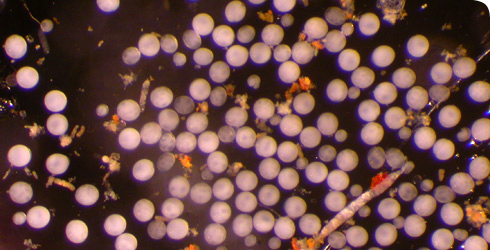Reproduction
It is important to understand Osedax mucofloris reproduction, as scientists want to know how these animals are able to disperse between isolated whale-fall habitats.
When the first species of Osedax was described, it was noted that the species seemed to exhibit very strong sexual dimorphism. The males did not develop into mature adults. Instead, they appeared to remain as larval-sized individuals attached to the side of females, fertilising eggs as they were released into the water column.
Dwarf males have been described for:
- O. frankpressi
- O. roseus
- O. rubiplumus
Why has Osedax evolved dwarf males?
We do not yet know the full answer. One theory is that it overcomes the problem of males and females finding each other if they are unable to move (sessile), as Osedax females are.
The males are able to move around the females, fertilising their eggs. It is easier to do this if you are small and motile, or dwarfed.
Toolbox
Glossary
Sexual dimorphism
Differences in the appearance of males and females of the same species.
